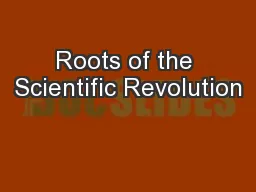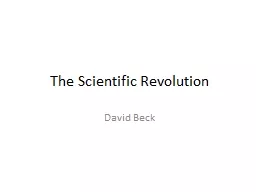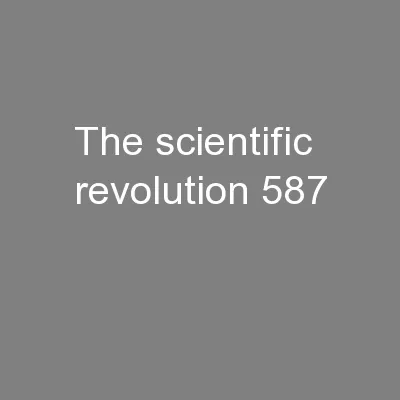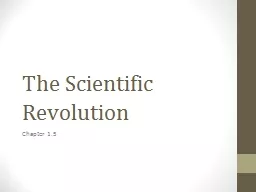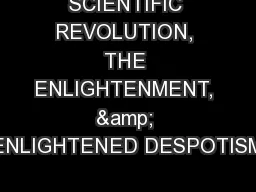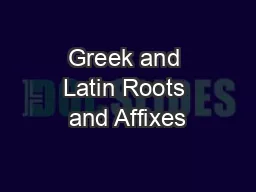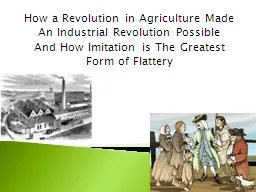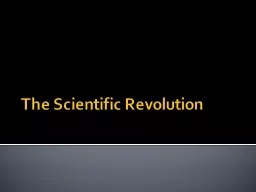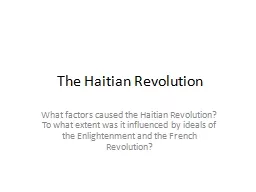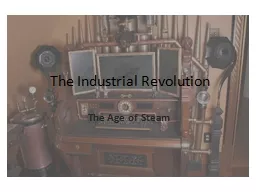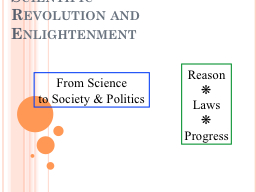PPT-Roots of the Scientific Revolution
Author : min-jolicoeur | Published Date : 2018-03-14
Learning Target 759 I can describe the roots of the Scientific Revolution based upon Christian and Muslim influences What is the Scientific Revolution The Scientific
Presentation Embed Code
Download Presentation
Download Presentation The PPT/PDF document "Roots of the Scientific Revolution" is the property of its rightful owner. Permission is granted to download and print the materials on this website for personal, non-commercial use only, and to display it on your personal computer provided you do not modify the materials and that you retain all copyright notices contained in the materials. By downloading content from our website, you accept the terms of this agreement.
Roots of the Scientific Revolution: Transcript
Download Rules Of Document
"Roots of the Scientific Revolution"The content belongs to its owner. You may download and print it for personal use, without modification, and keep all copyright notices. By downloading, you agree to these terms.
Related Documents

